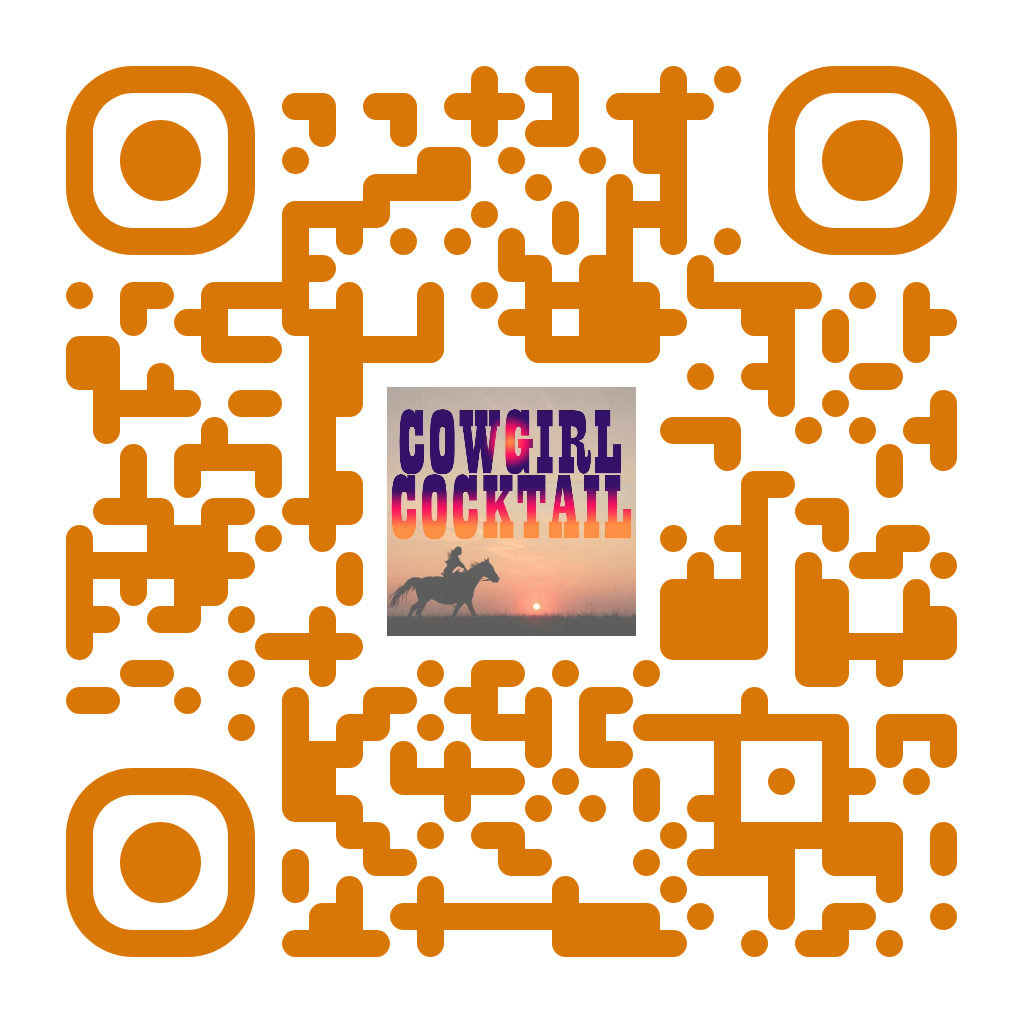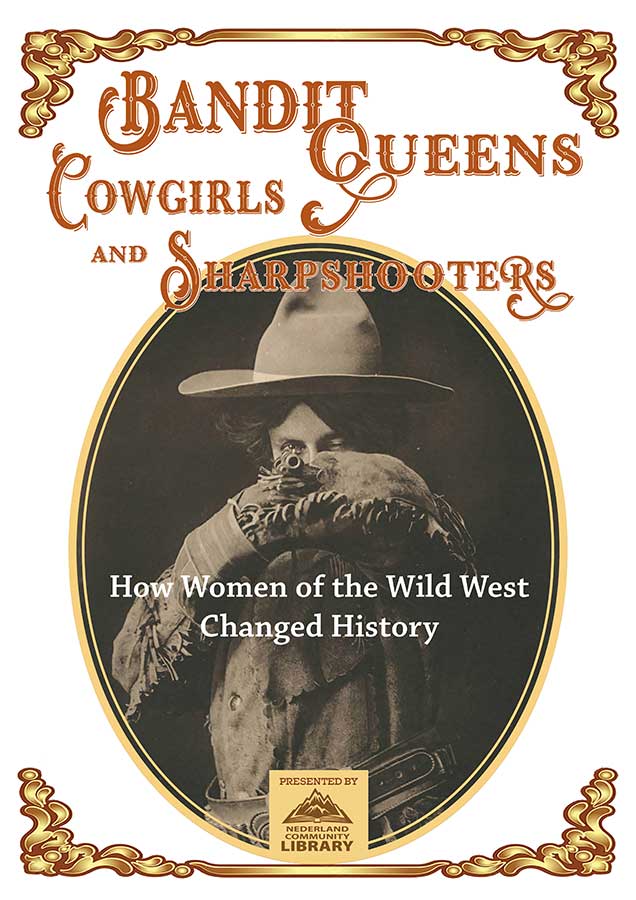
Bandit Queens, Cowgirls, and Sharpshooters: How Women of the Wild West Changed History
 Exhibit at the Library of Zeeland in Middelburg, The Netherlands, September 2025.
Exhibit at the Library of Zeeland in Middelburg, The Netherlands, September 2025.
Cowgirls
Buffalo Bill’s Wild West
The Cowgirl Image
“Cowgirls did not exist in the Old West. The term first appeared in the 1880s and was used to describe female performers in Wild West shows. In that era, women on horseback wore skirts and rode sidesaddle. For a woman to ride like a man astride a horse was considered sexually suggestive and highly improper.”
—John Beoessenecker, Wildcat: The Untold Story of Pearl Hart, the Wild West’s Most Notorious Woman Bandit
When Buffalo Bill’s Wild West visited Paris in the 1890s, his troupe of “American amazons” was among the most thrilling attractions.
—Musée de la Publicité, Paris
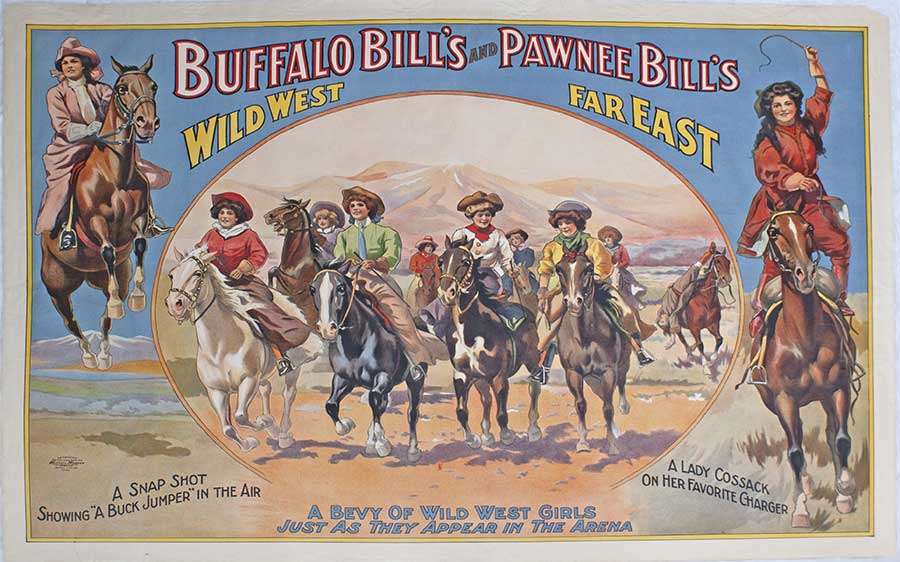
(Object ID# 73.0694a, snigle cowgirl: Object ID# 181, Buffalo Bill Museum and Grave, Golden, Colorado)
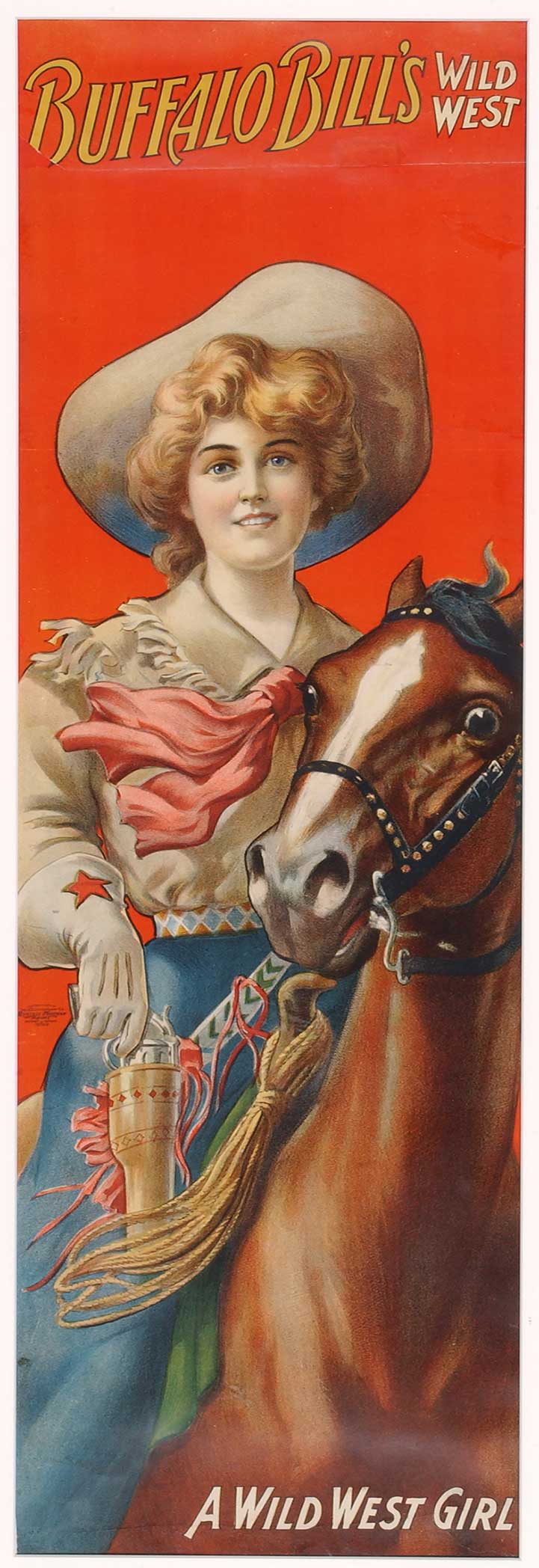
Daring and Practical
Cowgirl Style
“From the beginning, the cowgirl received worldwide attention for her sense of style.
“Her attitude toward clothing revealed much about her character, layered as it was with contradictions and surprises. She was practical; she was professional; she was feminine, and in many cases as capable, daring, and/or irresponsible as any cowboy.
“Some of the most exotic costumes were worn in the Wild West shows and in rodeos between 1910 and 1930.”
—Elizabeth Clair Flood,Cowgirls: Women of the Wild West
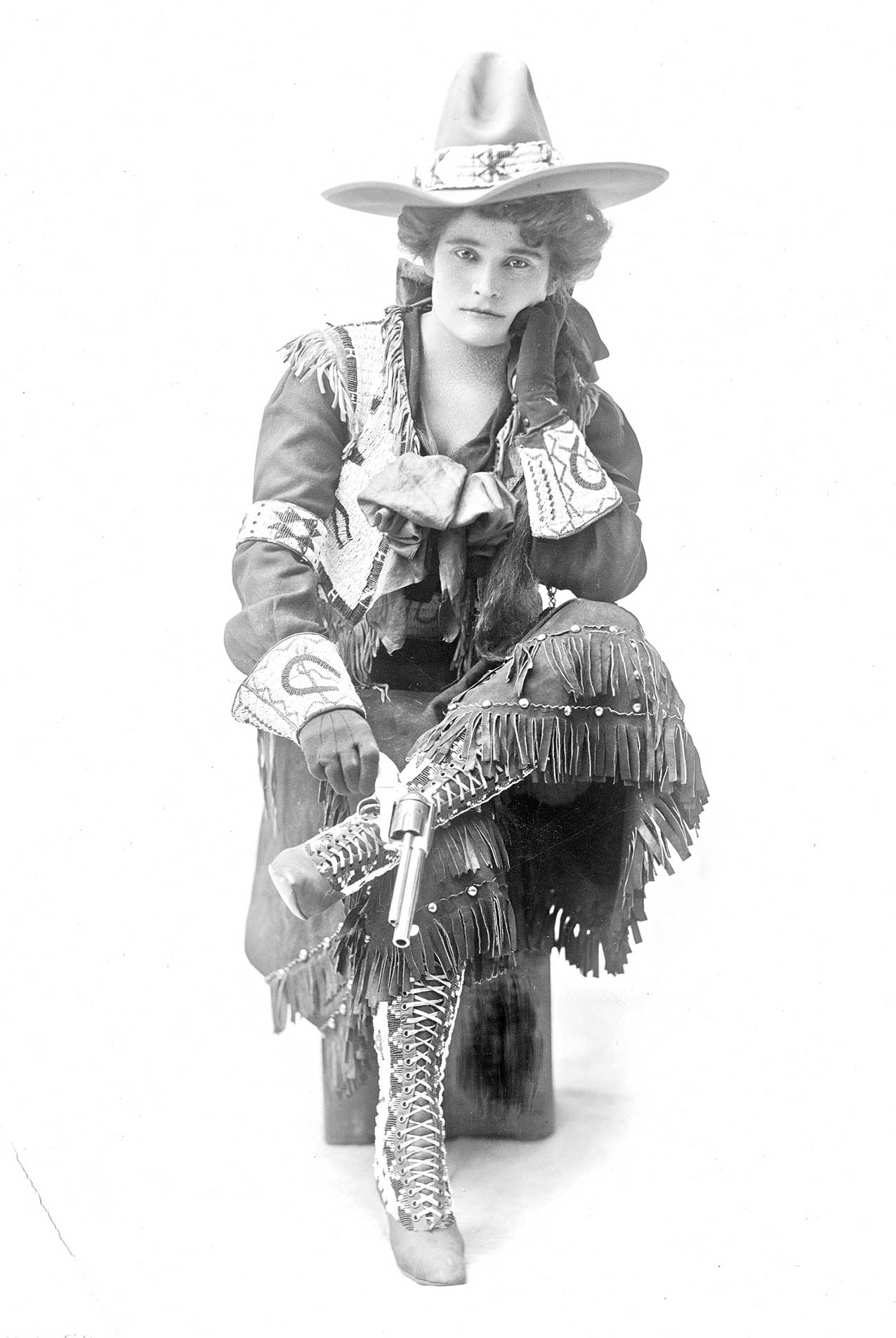
(Object ID# 152B, Buffalo Bill Museum and Grave, Golden, Colorado)
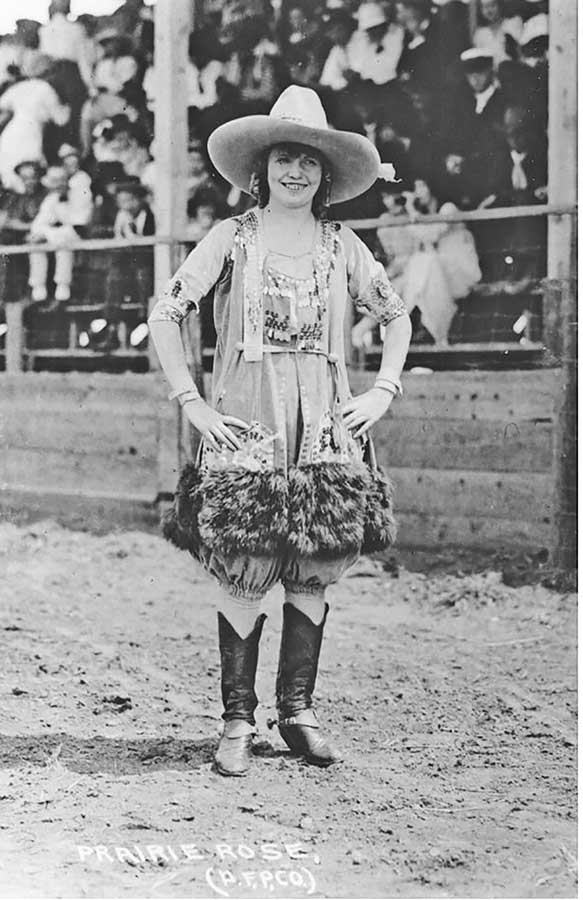
“Prairie Rose was the queen of fashion in her chiffon, sequins and fur. She wore bloomers with a long matching overblouse trimmed in chiffon, sequins, and a wide band of marabou feathers. With this of course she wore matching stockings, a widebrimmed tall crowned western hat, boots, and spurs.”
—Fellow cowgirl Vera McGinnis
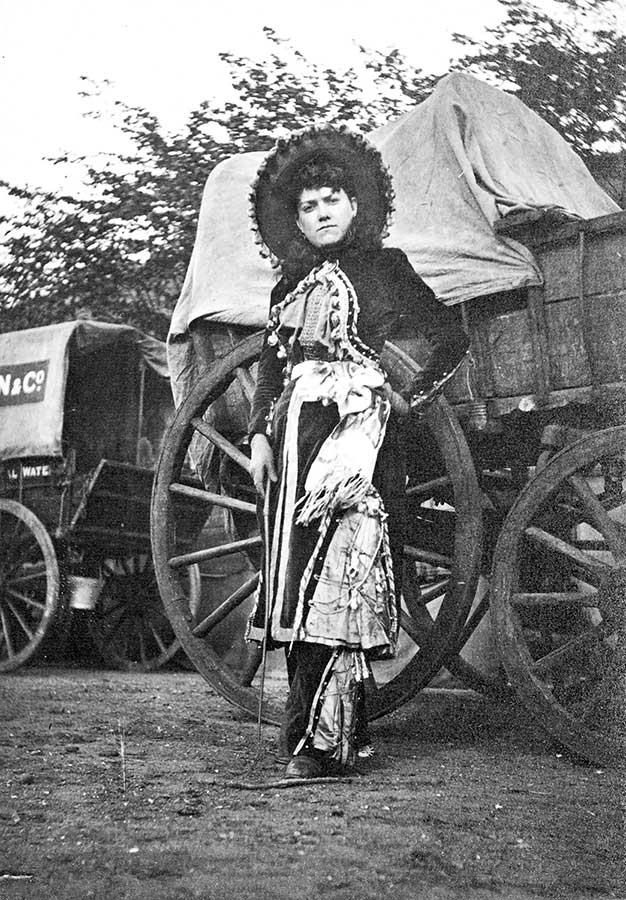
(Denver Public Library Special Collections, NS-537)
Cowgirl Style
Fashion and Function
More ‘bling’ on their costumes made them stand out in the arena.
They began wearing high-peaked hats with sombrero-sized brims, bright satin shirts with enormous neckerchiefs and high-topped, high-heeled boots embellished with elaborate stitching and artistic inlays. They used fancy embroidery, overlays, and beaded fringe. They decorated their hatbands, their buckskin vests, belts, buckles, spurs, and gauntlets (gloves).
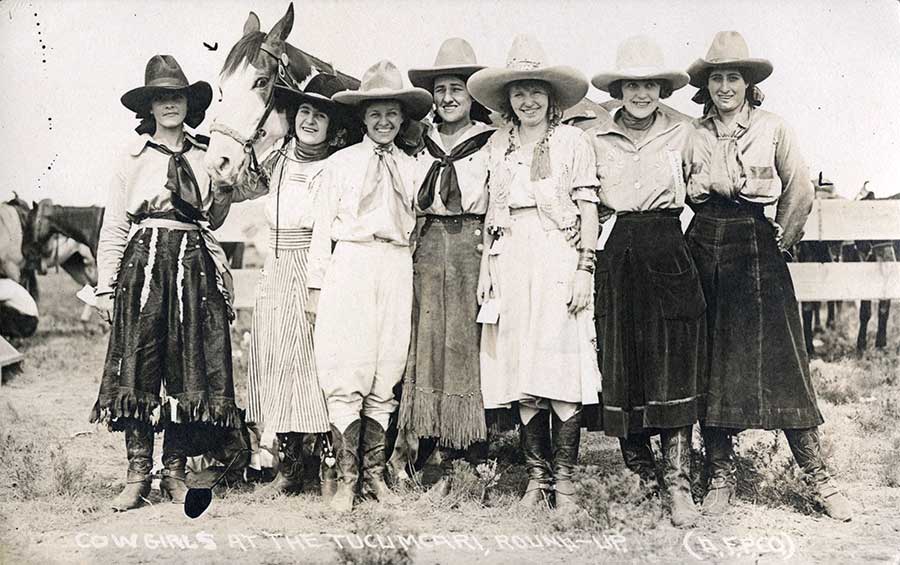
—John Beoessenecker, Wildcat: The Untold Story of Pearl Hart, the Wild West’s Most Notorious Woman Bandit

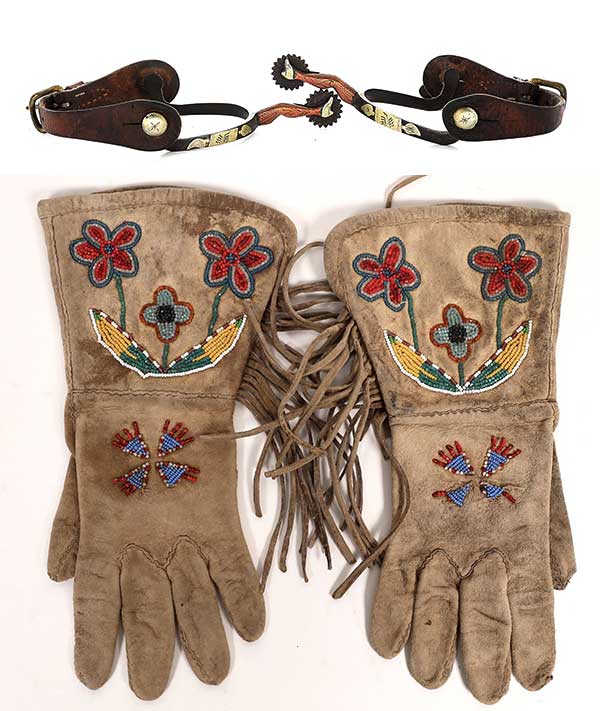
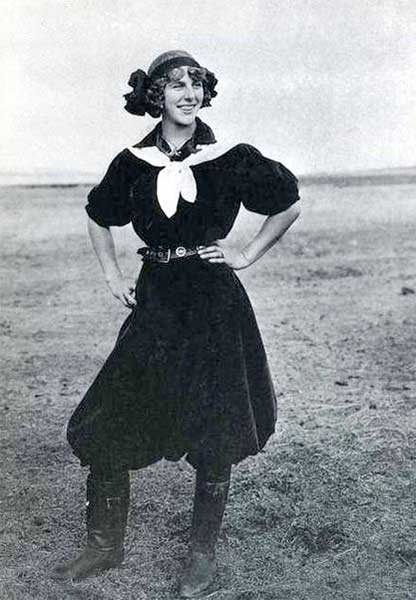
Chaps, which protected the legs and kept them warm in cold weather, could be woolly or flashy.
A cowgirl’s gauntlets were often beaded, and her spurs highly decorated.
Tillie Baldwin was a hairdresser in Norway before coming to America and becoming a cowgirl. The self-made rodeo cowgirl expanded her repertoire by dressing like a gymnast and creating her own bloomer outfits. She roped, trick-rode, relay-raced, rode bucking broncos, and was one of the few cowgirls who could wrestle a steer.
“Many a woman accentuated the romance that immediately enveloped her character with outfits sporting fringed skirts, inlaid boots, and colorful ribbons. The old-time cowgirl glowed with all the feminine pluck and impudence of Colette, mixed with a strength of character, all of which took root and blossomed in the western United States over the years spanning the emergence of the twentieth century.”
—Elizabeth Clair Flood, Cowgirls: Women of the Wild West
THE COWGIRL ATHLETE
Goldie Griffith
( 1893-1976)
Goldie Griffith was one of the first professional female athletes in the United States. She wrestled, fenced, and boxed, and when she found out that cowgirls made more money she became a trick rider and bronco buster. She also performed as an actor and a stunt rider for the brand-new western movies that were taking the country by storm.
She was married during a Buffalo Bill Wild West at Madison Sqiuare Garden with a crowd of 8,000 in attendance. A few years later, she pulled out her show gun, aimed at at her husband, and squeezed the trigger.
After Goldie retired from performing in Wild West shows she worked on a ranch near Nederland, Colorado, with her second husband. During the Great Depression she moved into town where she trained dogs for the war and ran boarding houses and restaurants.
—Kay Turnbaugh, The Last of the Wild West Cowgirls
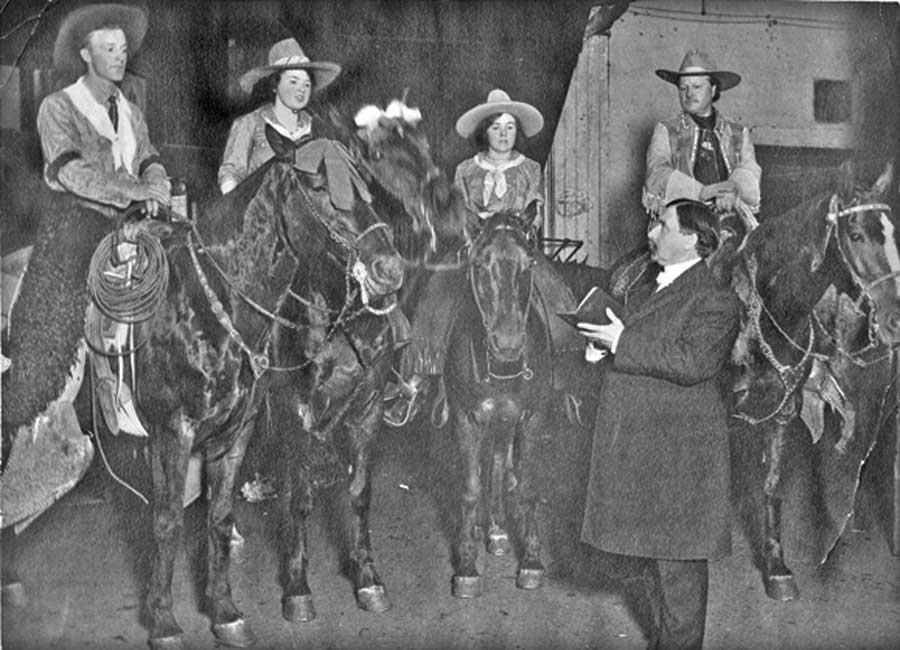
The day before her wedding, Goldie was thrown from her horse into the stands and was taken to the hospital. This photograph shows the groom (left), Goldie, her maid of honor, and Pawnee Bill.
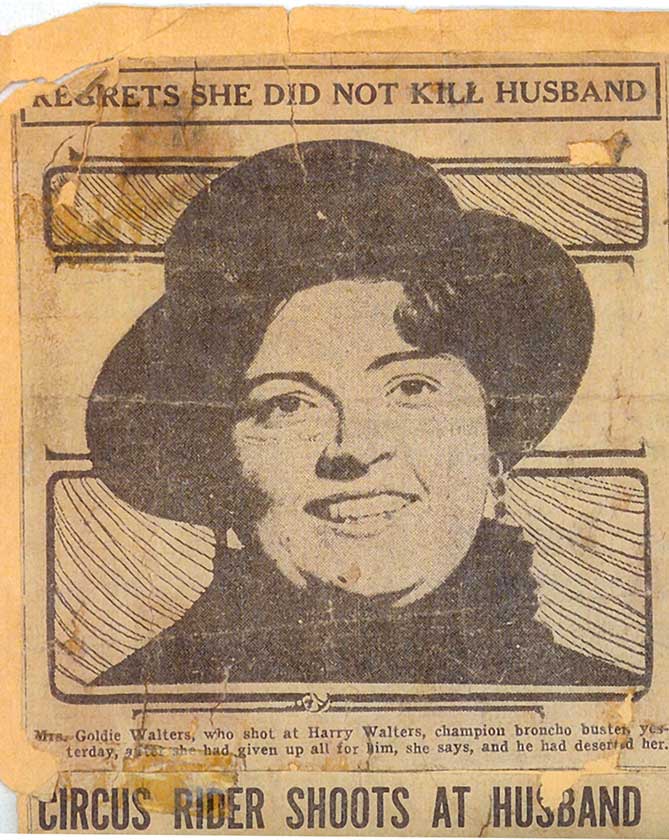
Goldie entertained visitors and reporters with her life stories from her jail cell in Denver after she tried to kill her husband.
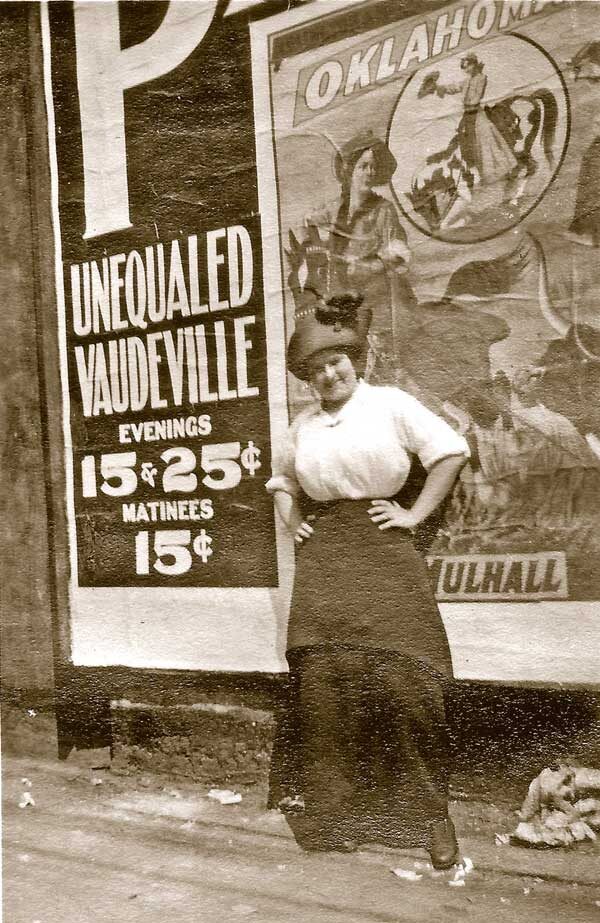
In 1914, Goldie joined Lucille Mulhall’s vaudeville show. Lucille Mulhall was arguably the most famous cowgirl of the time.
“The emancipation of women may have begun not with the vote, nor in the cities where women marched and carried signs and protested, but rather when they mounted a good cowhorse and realized how different and fine the view… From the back of a horse, the world looked wider.”
– Joyce Gibson Roach
SEE MORE FROM THE EXHIBIT: Bandit Queens >> Sharpshooters>>
GOLDIE!
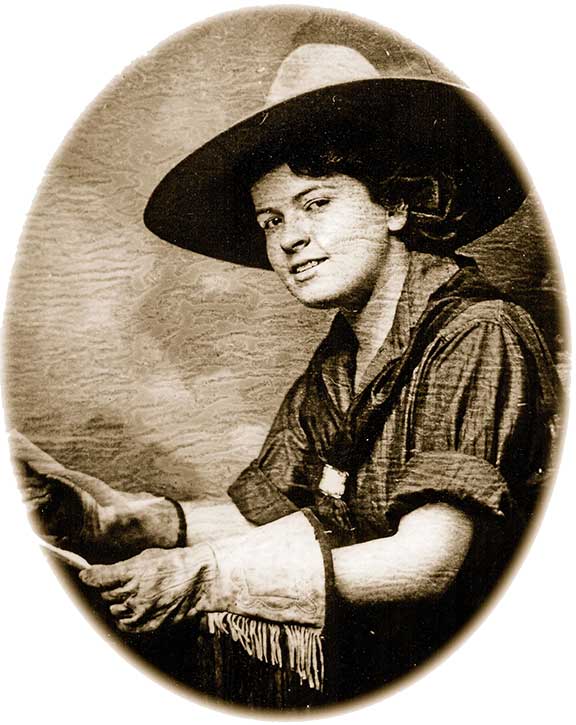 Read about Goldie Griffith
Read about Goldie Griffith
JOIN ME
every other week
on Cowgirl Cocktail
for more Wild West history
